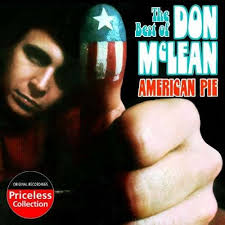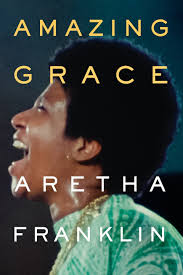Songs are ancient storytelling forms. Thousands of years ago—long before scripted language evolved—indigenous people got their message across by vocally singing as well as orally telling structured stories. This primal people-connection still resonates and you, as today’s novel writer, can benefit by understanding timeless song-structured forms.
I don’t pretend to be a songwriter or musician. I can barely play the radio, and my only rhythmic venture was a limerick unfit to print. However, I’m a moderately-skilled written storyteller who tries to improve by studying other storytelling venues including songs.
Novels are only one type of storytelling. We find stories in all sorts of artwork. Music, dance, songs, film, and plays come to mind. I think there’re stories to be found in abstract art like ice-sculpting and graffiti-painting. All art forms tell a story, and one of the most powerful connectors is a song.
This piece started the other day when I opened my inbox and Amazon offered me a free three-month subscription to their newest line called Amazon Music. I downloaded the app and checked it out. I was still up at 2 a.m. because this awesome and easy-to-use platform has stuff that took me back… a way, way back. Amazon Music is so good that it’ll make you want to throw rocks at Spotify.
Enough of pumping up the ’ZON. While listening to hours of songs with vocals ranging from Chubby Checker to Reba McIntyre to Celine Dionne to Brian Johnson, I felt a common thread. All their songs—as varied as their voices and lyrics are—have defined structures. I decided to explore this and see how understanding song forms could benefit me as a novelist. Hopefully, what I learned will benefit you, too.
The Three Main Song Forms
In songwriting, form and structure mean the same. They’re interchangeable terms that describe a framework for building time-proven and marketable products. Having said “for sale”, there are endless variations of the three song categories. It’s the same as breaking down the classic beginning, middle, and end novel structures into microcosms.
Think of a song—any song. Let’s go with Rock Around The Clock by Bill Haley and the Comets. It has a mix of all three forms in the tune, and it’s one of the catchiest dance pieces ever recorded. Jolene by Dolly Parton takes a classic form and reverses its structure. And Queen’s Bohemian Rhapsody is in a form-league of its own. I found a Rolling Stone quote saying this rock opera was so unique that it could only be sung by an entity like Freddie Mercury with God doing backup.
As different as Bohemian Rhapsody, Jolene, and Rock Around The Clock are, they still conform to recognized structures. It’s no different than taking novels like Wuthering Heights, Fifty Shades of Gray, and Harry Potter. Where there’s story, there’s form and structure. Let’s do a dive into the three main song forms with a caveat that I am not a songwriter by any score.
Verse-Chorus Form
This is the simplest and safest songwriting structure, especially in pop music. It’s highly effective at getting the story across. However, verse-chorus is not the oldest form. We’ll get to that in a minute.
There are two distinct parts in a verse-chorus song. The verse is the story and the chorus is emphasizing the message or theme. Songwriters refer to this as the ABAB structure where A is the verse and B is the chorus (which is also called the refrain).
The same thing happens in a novel where the story (verse) unfolds in the narrative through exposition, dialogue, and the treasure-trove of devices available to the novelist while the theme (quiet chorus) unfolds through plotting, characterization, and whatever else a novelist can dream of.
 A typical song verse contains lyrics that build on the story. Verse lyrics change as the song progresses. A typical chorus repeats itself. It’s here where the hook or earworm resides. You know. The catchy part—the one that pops-in while you’re having a shower. (Think “Chevy to the Levy” in American Pie)
A typical song verse contains lyrics that build on the story. Verse lyrics change as the song progresses. A typical chorus repeats itself. It’s here where the hook or earworm resides. You know. The catchy part—the one that pops-in while you’re having a shower. (Think “Chevy to the Levy” in American Pie)
Good verse-chorus song examples are Penny Lane (Beatles), California Girls (Beach Boys), and That’ll Be The Day (Buddy Holly).
Verse-Chorus-Bridge Form
This is an expansive form of the simple ABAB song structure. Songwriters term it the ABABCB form as it stretches the multi verse-chorus style by adding a musical or lyrical bridge to it. The bridge addition is often called a rift, solo, or a Middle 8.
Part of song structure expansion includes adding extras to the ABADCB form. They include an opening or introduction (intro) that is usually musical without lyrics. Then, songwriters go with one to three verses, throw in a single chorus, add a bridge/rift/solo/ Middle 8, and then finish off with a final chorus and an outro. The ABABCB outro is also known as a tag, coda, or conclusion.
Songwriters say they get more mileage with their music with the verse-chorus-bridge form. It allows a great change of pace from the twang-twang felt in the ABAB structure. Today, the ABABCB song form leads the pack of popularity.
Good verse-chorus-bridge song examples are Hot N Cold (Katy Perry), High and Dry (Radiohead), and What’s Love Got To Do With It (Tina Turner).
Strophic Form
Strophic form is by far the oldest song structure. It’s also the cleanest. It’s been around from the dawn of time and led to the early church hymns.
The only part in a strophic-structured song is the verse. That’s it. Sure, some songwriters clever it up with a hidden chorus built into the verse or slip in a rift as an interlude. But, purists stick with the strophic program when they really want to put story over strings, symbols, and saxophones.
 Strophic songs can be simplex or complex. In pure form are children’s lullabies like Hush Little Baby. Put a little flare to a strophic structure and you get the incredibly annoying It’s A Small World. Or, you can stretch strophic style to the magnificent Amazing Grace.
Strophic songs can be simplex or complex. In pure form are children’s lullabies like Hush Little Baby. Put a little flare to a strophic structure and you get the incredibly annoying It’s A Small World. Or, you can stretch strophic style to the magnificent Amazing Grace.
Some of the finest songs ever written fall in the strophic category. They are timeless treasures telling tragedy and triumph. As a rule, strophic-structure songs are much longer than ABAB and ABABCB forms.
Good strophic song examples are Wreck of The Edmund Fitzgerald (Gordon Lightfoot), Maggie May (Rod Stewart), and Mack The Knife (Bobby Darrin).
Analyzing Actual Song Forms
This piece wouldn’t be fun without grabbing an ABAB song, an ABABCB song, and a Strophic song and having a look at what makes them tick. Doing this can make you relate to your novel structure, and we can always improve on that—at least I can improve on mine. Here are three highly-successful songs that use common songwriting forms.
ABAB Song Form — Bad Moon Rising (John Fogerty)
(verse)
I see the bad moon a-rising
I see trouble on the way
I see earthquakes and lightnin’
I see bad times today
(chorus)
Don’t go around tonight
Well it’s bound to take your life
There’s a bad moon on the rise
(verse)
I hear hurricanes a-blowing
I know the end is coming soon
I fear rivers overflowing
I hear the voice of rage and ruin
(chorus)
Well don’t go around tonight
Well it’s bound to take your life
There’s a bad moon on the rise, all right
(guitar bridge/rift/Middle8)
(verse)
Hope you got your things together
Hope you are quite prepared to die
Looks like we’re in for nasty weather
One eye is taken for an eye
(chorus)
Well don’t go around tonight
Well it’s bound to take your life
There’s a bad moon on the rise
(chorus)
Don’t come around tonight
Well it’s bound to take your life
There’s a bad moon on the rise
ABABCB Song Form — Hotel California (The Eagles)
(horn/guitar/drum intro)
(verse)
On a dark desert highway
Cool wind in my hair
Warm smell of colitas
Rising up through the air
Up ahead in the distance
I saw a shimmering light
My head grew heavy and my sight grew dim
I had to stop for the night
(verse)
There she stood in the doorway
I heard the mission bell
And I was thinkin’ to myself
‘This could be heaven or this could be hell
Then she lit up a candle
And she showed me the way
There were voices down the corridor
I thought I heard them say
(chorus)
Welcome to the Hotel California
Such a lovely place such a lovely place
Such a lovely face
Plenty of room at the Hotel California
Any time of year any time of year
You can find it here
(verse)
Her mind is Tiffany-twisted
She got the Mercedes Benz, uh
She got a lot of pretty, pretty boys
That she calls friends
How they dance in the courtyard
Sweet summer sweat
Some dance to remember
Some dance to forget
(verse)
So I called up the Captain
“Please bring me my wine”
He said, “We haven’t had that spirit here since 1969”
And still those voices are calling from far away
Wake you up in the middle of the night
Just to hear them say
(chorus)
Welcome to the Hotel California
Such a lovely place such a lovely place
Such a lovely face
They livin’ it up at the Hotel California
What a nice surprise what a nice surprise
Bring your alibis
(verse)
Mirrors on the ceiling
The pink champagne on ice
And she said, “We are all just prisoners here of our own device”
And in the master’s chambers
They gathered for the feast
They stab it with their steely knives
But they just can’t kill the beast
(verse)
Last thing I remember
I was running for the door
I had to find the passage back
To the place I was before
“Relax”, said the night man
“We are programmed to receive
You can check out any time you like
But you can never leave”
(long guitar bridge/rift/outro)
Strophic Song Form — The Times They Are A Changing (Bob Dylan)
(short harmonica intro)
(verse)
Come gather ’round, people
Wherever you roam
And admit that the waters
Around you have grown
And accept it that soon
You’ll be drenched to the bone
If your time to you is worth savin’
And you better start swimmin’
Or you’ll sink like a stone
For the times they are a-changin’ (chorus)
(short harmonica bridge)
(verse)
Come writers and critics
Who prophesize with your pen
And keep your eyes wide
The chance won’t come again
And don’t speak too soon
For the wheel’s still in spin
And there’s no tellin’ who
That it’s namin’
For the loser now
Will be later to win
For the times they are a-changin’ (chorus)
(long harmonica bridge)
(verse)
Come senators, congressmen
Please heed the call
Don’t stand in the doorway
Don’t block up the hall
For he that gets hurt
Will be he who has stalled
The battle outside ragin’
Will soon shake your windows
And rattle your walls
For the times they are a-changin’ (chorus)
(short harmonica bridge)
(verse)
Come mothers and fathers
Throughout the land
And don’t criticize
What you can’t understand
Your sons and your daughters
Are beyond your command
Your old road is rapidly agin’
Please get out of the new one
If you can’t lend your hand
For the times they are a-changin’ (chorus)
(long harmonica bridge)
(verse)
The line it is drawn
The curse it is cast
The slow one now
Will later be fast
As the present now
Will later be past
The order is rapidly fadin’
And the first one now
Will later be last
For the times they are a-changin’ (chorus)
(short harmonica outro)
Let Song Forms Benefit Your Novel Writing
Songwriters, like novelists, know rules need followin’. The three-form rule is basic to writing gold-record songs as the three-act rule is to penning blockbuster novels. Some things work, and these three forms or structures are proven.
The basics—guidelines more than rules, they say—and they say it’s okay to break the rules as long as you know what you’re doing when you break them. I agree, and from what I observed in the three ABAB, ABABCB, and Strophic styles, they are full of rule breaking. And I think Fogerty, Felder/Frey/Henley, and Dylan knew exactly what they were doing when they did so.
Your novel writing is your personal craft. It’s your expression and it’s your freedom of individuality. Go ahead and break the rules if you want. Just like the songwriters do. But, understand what conventional structures are before you color outside the lines.
What about you KZ writers? What’s your experience with story form and how songwriting applies to your work? And you KZ readers? What do you see in similarities between songs and novels? Please feel free to comment!
———
 Garry Rodgers is a retired homicide detective and exhausted coroner, now an energetic crime writer and indie publisher. He’s also an avid song-writing student and wishes he could write like Bob Dylan instead of sing like him.
Garry Rodgers is a retired homicide detective and exhausted coroner, now an energetic crime writer and indie publisher. He’s also an avid song-writing student and wishes he could write like Bob Dylan instead of sing like him.
Check out DyingWords.net which is Garry’s website and popular personal blog. He’s also out there on Twitter. Garry Rodgers lives on Vancouver Island in beautiful British Columbia on Canada’s west coast where he spends non-writing time putzing around the Pacific Ocean.

